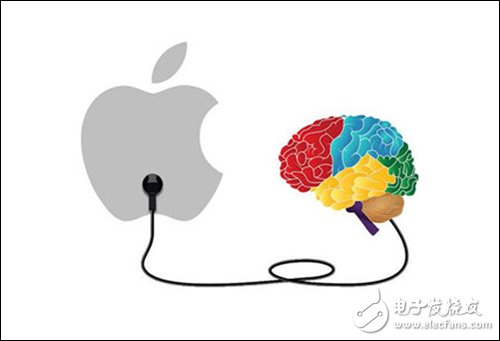According to foreign media reports, Apple has finally released its first academic paper on artificial intelligence (AI), mainly publishing its research results in the field of intelligent image recognition.
The tradition of "confidentiality" makes Apple abandon the academic circle
Apple has said that the work of tearing down its "secret wall" has finally made substantial progress.
For a long time, Apple has not announced its own development of artificial intelligence. The cultural tradition of “confidentiality†has made Apple's artificial intelligence research progress mysterious, but it has also caused trouble for itself.
It is the key to gaining popularity and peer recognition in the academic circle, and promoting research progress through communication. But Apple's "confidential" approach has made it difficult to recruit talent from the academic circle, which has caused Apple's patent applications in artificial intelligence and other areas to be surpassed by its main competitors.
Under the wave of artificial intelligence, in addition to Apple, many companies such as Google and Facebook have their own machine learning research groups, but the difference is that they often publish their own academic research results.
At the NIPS conference in Spain earlier this year, Russ Salakhutdinov, head of Apple's artificial intelligence R&D department, promised to allow his artificial intelligence and machine learning researchers to publicly publish and share their latest research results, and will also actively participate in the discussion of the AI ​​academic circle.
Today, it took nearly a month. According to foreign media reports, Apple has fulfilled its commitment and finally released the first academic paper on artificial intelligence (AI).
What is the research result of Apple's intelligent image recognition?
 
Apple's research paper was submitted for review in mid-November and was published on December 22nd by the Cornell University Library.
The report illustrates an image recognition technique that uses computer-generated images to train algorithms. The report pointed out that in machine learning research, using synthetic images for neural network training is more effective than real images, because the composite images have been marked and annotated, saving time and effort.
But while using synthetic images and video to train machine learning can reduce time and labor costs, synthetic images are easier to obtain and customize, but the report also points to the drawbacks of using composite images: it can lead to neural network algorithms and real-world The scene produces deviations that result in a decline in the quality of the program.
To this end, Apple researchers have proposed a solution to improve the realism of composite images through a "simulated + unsupervised" learning approach. Apple has also developed a new machine learning technology called "Generation Against Grid (GAN)" that produces more realistic images by having two neural networks fight each other. The paper also mentioned that Apple expects to replace the static image training algorithm with video input in the future.
However, Apple only released artificial intelligence research papers, which does not mean that such research will soon become a consumer technology, but it can also be seen that Apple has also exerted its power on artificial intelligence image recognition.
Apple is about to open a few streets by opponents in AI research.
According to statistics from CBInsights, a third-party research company, almost half of the nearly 140 AI startups have been acquired since 2011, and 40 in 2016. In the tide of the acquisition of AI startups, Apple is also one of the main "buyers", but the most frequent acquisition is still Google.
Since 2015, Apple has acquired artificial intelligence company VocalIQ (mainly natural language processing and machine autonomous learning), PercepTIo (image recognition for smartphones), EmoTIent (analysis of facial expressions of people in images and their emotions), Turi ( Providing developers with artificial intelligence development tools and frameworks), some of the acquired technologies have been applied to Apple's products. For example, the albums that come with the iOS10 system have been able to identify people and things in photos, and automatically sort them according to different themes of photos. .
But even so, Apple's artificial intelligence technology is still somewhat behind its competitors.
CBInsights recently announced the patent application statistics of five large technology companies, including Apple, Google, Microsoft, Amazon, and Facebook. In the field of popular artificial intelligence, Apple applied for a patent that lags behind the main rivals and ranks last.
In the automotive sector, Apple ranked second in number of patents and Amazon ranked third. But in the field of autonomous vehicles, Apple is still in a backward position, and its rivals are already far ahead.
Apple's development in artificial intelligence has been split by its main competitors. Competitors have more acquisitions and patents, and Apple’s secrecy has also separated itself from the artificial intelligence academic circle. Now Apple has finally chosen an open attitude to publish research papers, which is also considered in artificial intelligence research. Take a new step.
T Series Pluggable Connectors,Custom Pluggable Connectors,T Branch Parallel Connectors,Quick Splice Connector
Jiangmen Krealux Electrical Appliances Co.,Ltd. , https://www.krealux-online.com